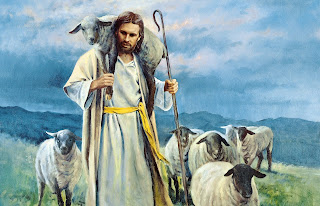SALVATION ARMY - who
are you? – Part 1
By David Woodbury
 |
| Open-air meeting at Auburn C1958. |
Recently, the Heritage Centre posted on Facebook an image of
an open-air meeting at the suburban corps of Auburn, in Sydney. Having spent my
formative years in this corps the photograph piqued my interest and I was able
to identify several people in the picture including the then Territorial
Commander, Commissioner (Later General) Frederick Coutts.
It started me thinking about The Salvation Army then and now, and pondered
on how much things have changed. A question ran through my mind:
Do we today, still have the same strong sense of identity?
As I remember the Army, at the corps level, in the 50s through
to 80s it had little doubt about its identity even though some saw us as
different, even a little quaint, but an organisation that promoted a brand of
Christianity with its sleeves rolled up. It was this uniqueness and action that
marked us out from other religious movements. It may well be that the general
public was well and truly aware of us in the public space, due in part to our
brass bands which would be found in most medium to large corps.
Most corps operated a comprehensive range of programs and
activities for all who called The Salvation Army their spiritual home. On almost every day of
the week, there were activities across a broad age range. All this contributed
to a strong sense of community within the local corps. There was a strong sense
of family with many corps having generational membership. The Auburn Corps had
several sets of fathers and sons playing in the band.
 |
| Corps Cadet Congress - Sydney C1972. |
Corps cadets, Junior Soldiers, Directory all provided sound
instruction, training and fellowship for young people coupled with a
comprehensive Sunday School program.
Singing companies, junior bands, junior timbrel brigades and
SAGALA sections also provided spiritual, social and intellectual participation
for young people.
Home league, evening fellowships and SAGALA sections all
provided fertile grounds for evangelical outreach. In some corps, an emergency
services unit was a warm area for the involvement of those on the fringe of the
corps.
Among all these positives some that needed a clearer and
more objective focus. In many ways, we were an over-regulated and at times,
legalistic movement. Our preoccupation with the numerous orders and regulations
occupied too much time and energy. The reality was that at times, they assumed
almost biblical authority which often contradicted common sense.
 |
| Drawing by Lindsay Cox |
Much debate took place over the length of men's hair, the
length of women's skirts etc. During this time an attempt was made to simplify
uniform with many corps still having distinctive trimmings dating back to the
first half of the century. However, the introduction of festival coats in corps
bands was questionable given our mission focussed calling, as was our almost
obsessive pursuit of musical excellence which, in some ways, deflected us from
our primary mission.
Whatever the strengths and weaknesses of the Army in this period
it was a very stable and functional organisation, perhaps, due in large to
three distinctive characteristics;
It had standards,
It had standards,
It had structure,
And it had programs
Any organisation, be it commercial or religious needs these
three fundamental characteristics if it is to be effective and grow. Right up
until the early 80s the Army still had these structures in place. Subsequently,
these three fundamentals began to weaken in the mid-eighties and the soldier’s
roll went into steep decline. Along with all this went a weakening of our
identity.
There were many positive and beneficial programs in that
era. Some still exist in certain corps but a mere shadow of what we once were. Some
matters needed to be addressed and re-directed. However, as often happens in
the world of humanity; when the pendulum swings, it swings too far, and it may
well be that we threw out the baby with the bathwater.



Important thoughts here. Thanks.
ReplyDelete